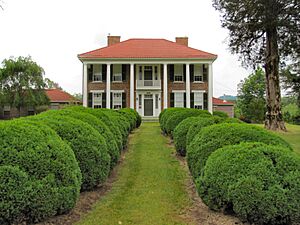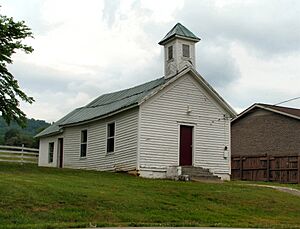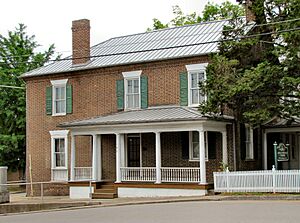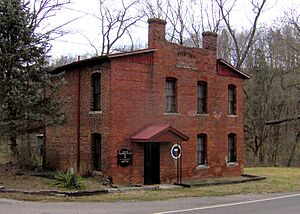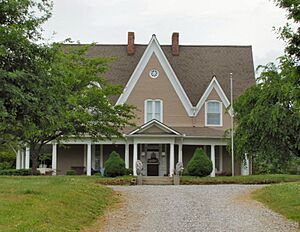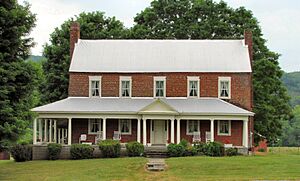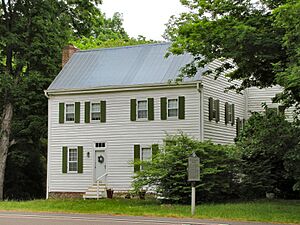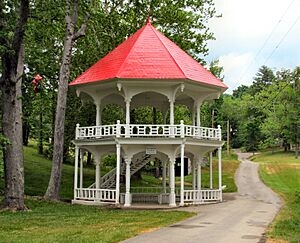National Register of Historic Places listings in Grainger County, Tennessee facts for kids
Have you ever wondered about old buildings and places that tell a story? In Grainger County, Tennessee, there are some really special spots that are listed on the National Register of Historic Places. This list is like a hall of fame for buildings, areas, and objects that are important to American history.
These places are chosen because they show us what life was like long ago, or because important events happened there, or even because they are beautiful examples of old architecture. Think of them as time capsules that help us understand the past! In Grainger County, there are 10 of these amazing places. Let's explore some of them!
Contents
What is the National Register of Historic Places?
The National Register of Historic Places is the official list of the United States' historic places worth saving. It's managed by the National Park Service. When a place is added to this list, it means it's recognized as important to the history of the country, state, or local community.
It's not just about old houses! The list includes all sorts of places, like churches, schools, bridges, and even whole neighborhoods. Each place on the list has a unique story to tell about the people and events that shaped our world.
Amazing Historic Spots in Grainger County
Grainger County is full of history, and these places are great examples. Each one has a special story.
William Cocke House
The William Cocke House is located northeast of Rutledge. This historic home once belonged to William Michael Cocke. He was an important person who served as a Congressman. The house was added to the National Register in 1980. It helps us remember the people who helped shape the area's early government.
Henderson Chapel African Methodist Episcopal Zion Church
The Henderson Chapel African Methodist Episcopal Zion Church is on Church Street in Rutledge. This church is a significant landmark for its community. It was recognized for its historical importance and added to the National Register in 2000. Churches often play a big role in the history and social life of a town.
Lea Springs
About 11 miles southwest of Rutledge, you'll find Lea Springs. This spot is off U.S. Route 11W and then west on Lea Lake Road. It was listed on the National Register in 1975. Places like Lea Springs often have interesting natural features or were popular gathering spots in the past.
Nance Building
The Nance Building is in Rutledge, right at the corner of Marshall Street and U.S. Route 11W. This building was added to the National Register in 1998. Historic buildings like the Nance Building often show us what town centers looked like many years ago. They can also tell us about old businesses and community life.
Old Grainger County Jail
In Rutledge, at the southeast corner of Water Street and TN 92, stands the Old Grainger County Jail. This old jail building was added to the National Register in 2015. Old jails can be fascinating because they show us how justice was handled in earlier times.
Poplar Hill (Cynthia Lea House)
Northeast of Blaine is Poplar Hill, also known as the Cynthia Lea House. This beautiful home was listed on the National Register in 1980. It's a great example of historic architecture in the area. Old houses like this often have unique designs and tell stories about the families who lived there.
Richland
Also in Blaine, at 1760 Rutledge Pike, is a place called Richland. This historic site was added to the National Register in 2014. It's another important piece of Grainger County's past, showing the different types of historic properties found in the region.
Rutledge Presbyterian Church and Cemetery
The Rutledge Presbyterian Church and Cemetery is located at 123 Church Street in Rutledge. This historic church and its cemetery were added to the National Register in 2015. Cemeteries can be very important historical sites, as they often contain the graves of early settlers and important community members.
Shields' Station
On U.S. Route 11W in Blaine, you'll find Shields' Station. This site was listed on the National Register in 1973. "Stations" in early American history were often places where travelers could stop, rest, and get supplies. They were like early roadside inns or trading posts.
Tate Springs Springhouse
East of Bean Station on U.S. Route 11W is the Tate Springs Springhouse. This unique building was added to the National Register in 1973. Springhouses were often built over natural springs to keep water cool and fresh. They were very important before modern refrigeration.



